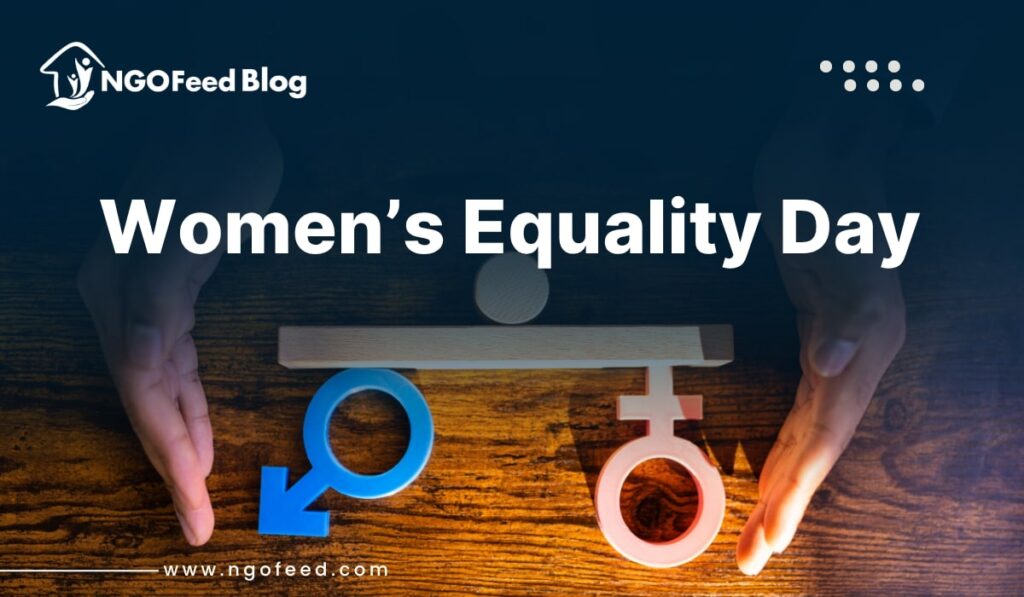Celebrated every year on August 26, Women Equality Day honors the passing of the 19th Amendment to the United States Constitution in 1920, which gave American women the right to vote. Though it started in the U.S., the day has grown into a worldwide icon of the constant fight for gender equality. It reminds one of the ongoing social, political, and economic injustices women experience everywhere as well as honors development.
Women’s Equality Day is a call to action rather than just a reflection on the past. It calls on people, communities, organizations, and governments to reaffirm their support for women’s rights, confront discriminatory systems, and guarantee that equality goes from dream to reality.
Table of Contents
Women Equality Day: History and Origins
- Women’s Equality Day has its roots in the women’s suffrage movement of the late 19th and early 20th centuries.
- Often regarded as the beginning of the U.S. women’s rights movement, the Seneca Falls Convention saw leaders including Elizabeth Cady Stanton and Lucretia Mott urge for women’s suffrage.
- 1920 Ratification of the 19th Amendment: American women finally acquired the legal right to vote on 26 August 1920 following years of lobbying, activism, and protest.
- U.S. Congresswoman Bella Abzug promoted the concept of marking the anniversary yearly in 1971. The day was formally acknowledged in 1973.
- Originally arising in the American setting, its message links to worldwide battles for voting rights, workplace equality, reproductive rights, access to education, and freedom from gender-based violence, therefore, resonates globally.
Also Read: Role of UN-Habitat in India
Women Equality Day 2025 Global Relevance
Though most nations today give women the right to vote, gender equality is still not complete. Globally:
- Women make less money than men for the same job.
- Violence based on gender is still quite widespread.
- Leadership posts in politics, industry, and science are disproportionately held by men.
- Cultural expectations and discriminatory laws continue to restrict women’s rights in several areas.
- The world’s dedication to solving these inequalities is reflected in the UN Sustainable Development.
Goal 5: Achieve Gender Equality and empower All Women and Girls.
Goals and Objectives
Women’s Equality Day attempts to:
- Honour earlier successes in the struggle for gender equality.
- Spread knowledge about persistent disparities in income, representation, education, and healthcare.
- Encourage advocacy and action against discriminatory laws and practices.
- Encourage inclusive policies in political, public life, and the workplace.
- Encourage men and communities to break apart patriarchal systems by means of allyship.
Also Read: Role of NGOs in Shaping UN Policies on Migration
Women Equality Day Significance
- Honoring the Suffragists – Recognizing the courage and sacrifices of the women and men who fought for suffrage.
- Highlighting Continuing Challenges – From pay inequity to underrepresentation in leadership roles.
- Empowering the Next Generation – Inspiring young women and girls to lead, participate, and innovate.
- Creating Policy Momentum – Encouraging governments to close legislative gaps on equality.
Events and Festivals
- Educational initiatives: Universities and schools provide seminars, discussions, and lectures on gender equality.
- Campaigns about storytelling: Stories of women who have crossed barriers across many domains.
- Policy Advocacy: NGOs and advocacy organizations advocate for changes in fields like maternity leave, workplace harassment, and fair compensation.
- Public art displays, marches, and protests promoting women’s rights abound in community events.
- Hashtags such #WomensEqualityDay, #GenderEquality, and #EachForEqual aid in worldwide awareness campaigns on social media.
Women Equality Day: NGO Functions
Non-governmental organizations are very important in helping to magnify Women’s Equality Day’s message:
- Study of gender inequalities and publication of results.
- Providing legal assistance to those who have experienced gender-based discrimination.
- Programs to develop running abilities for women in poor and neglected areas.
- Working with schools early to fight gender stereotypes.
- Supporting policy changes at local, national, and global scales.
Also Read: Role of UNICEF in Menstrual Health and Hygiene
Obstacles on the way toward equality
Despite advances, difficulties continue:
- Cultural opposition to changing conventional gender roles.
- Unequal access to medical and educational care in underdeveloped countries.
- Occupational segregation and gender pay gap.
- Harassment and violence prevent women from full public participation.
- Under-representation of politics in several countries.
Conclusion
Women Equality Day is both a celebration and a difficulty; it is a celebration of the amazing achievements made over the previous century as well as a challenge to address the injustices that still exist. It emphasizes that gender equality is a society necessity, not just a women’s one. Governments, civil society, corporations, and people must pledge to continued action to guarantee that every country’s political, economic, and cultural fabric is woven with equality.
Also Read: Role of UNDRR in India
Frequently Asked Questions (FAQs)
Q1: Why is Women’s Equality Day important beyond the U.S.?
A: Its core message—ending gender inequality—is universal. Many of the struggles it highlights, such as the pay gap and gender-based violence, are global issues.
Q2: How can individuals participate in Women’s Equality Day?
A: By educating themselves on gender issues, supporting women-owned businesses, advocating for equal pay policies, and challenging stereotypes in daily life.
Q3: Is gender equality only about women’s rights?
A: No. Gender equality benefits all genders by creating a fairer, more inclusive society and unlocking the full potential of human talent.
Q4: What progress has been made since the 19th Amendment?
A: Women’s literacy, political participation, and access to higher education have increased globally, but gaps remain in pay, leadership, and safety.
Q5: What role do men play in achieving gender equality?
A: Men can be allies by advocating for equality, sharing domestic responsibilities, mentoring women, and actively opposing sexist behavior.

